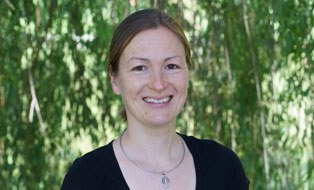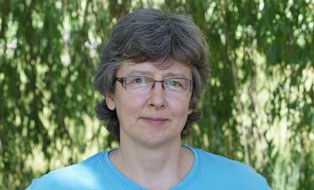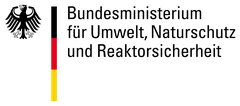bioProtect
Joint project
Development and implementation of biotechnological methods of insecticide-free bark beetle regulation by utilizing and controlling natural bark beetle antagonists as strategy to support biological diversity and carbon dioxide sink function of forests
Project period
15.12.2015 – 14.03.2020
Project partners
Georg-August-Universität Göttingen
Abteilung Forstzoologie und Waldschutz
Prof. Dr. Stefan Schütz
Ostdeutsche Gesellschaft für Forstplanung mbH
Niederlassung Sachsen
Dr. Michael Wehnert
Supporting project partners
Staatsbetrieb Sachsenforst
Niedersächsische Landesforsten
Project description
The project aims at developing environmentally friendly biotechnological methods for monitoring and controlling bark beetle populations as an innovation in the context of natural forest protection, and to test their implementation under practical conditions. The project will provide insecticide-free forest protection methods for practical application and support agricultural policy objectives of the German federal government. These objectives include the utilization of natural, insecticide-free methods for bark beetle control, mitigating the effects of expected climate change, and stabilizing forest health as well as the adaptability of forests. Enhancing natural feedback mechanisms is expected to prevent negative effects of insecticide use on the biological diversity of forests, promoting forest biodiversity and improving the adaptability of forests to climate change. The future application of the methods to be developed aims at preventing bark beetle infestations on the one hand, and preventing progeny from trees or timber that has already been colonized by bark beetles on the other hand. While the first aspect is particularly relevant in managed forests, the second aspect relates to both timber producing forests and non-commercial forests as well as to individual trees (including stacks of wood, storm-damaged timber, occurrence of deadwood and the like) which are not supposed to act as source for bark beetle spread. Moreover, new possibilities in bark beetle monitoring will be developed by extending existing approaches to bark beetles species that will occur in the increasing areas of deciduous forests, as well as to invasive species that hold a potential risk for German forest ecosystems.
Within this project, the existing procedures for bark beetle management will be further optimized with regard to the range of chemical substances used and performed in large-scale field tests for the first time. The results to be derived from the project are essential for transferring these procedures into practice. Therefore, a practice handbook with recommendations for action will be developed, which presents alternatives to the common use of insecticides in bark beetle management. The handbook will not only describe the effectiveness levels but also the ecological added value that can be achieved by environmentally friendly methods as well as the positive feedback on biological diversity (e. g. promotion of beneficial organisms, prevention of adverse effects) and consequently on the ability of forests to adapt to climate change.
Download Final Report via Waldklimafonds project database
Project based publications, presentations and undergraduate & graduate theses
*Publications*
Helbig C., Heber, T. (2019): Chemische Sabotage im Waldschutz: Wirkung bärlauchbasierter Semiochemikalien auf den Fang von Borkenkäfern und deren Antagonisten in Beständen der Gemeinen Esche (Fraxinus excelsior L.). In: Köhler, A.; Blank, S. M.; Moritz, G. B.; Kramp, K. (Hrsg.) (2019): Entomologentagung 2019 in Halle (Saale) 11.-14.03.2019. Programm und Zusammenfassungen: 88.
Helbig C., Heber T. (2020): Chemical sabotage in forest health management: Effects of Allium ursinum L. based semiochemicals on the catches of bark beetles and their antagonists in stands of European ash (Fraxinus excelsior L.). Mitteilungen der Deutschen Gesellschaft für allgemeine und angewandte Entomologie, Band 22: 273-277.
Helbig C., Müller M., Wehnert M. (2017): Nutzung und Steuerung natürlicher Borkenkäferantagonisten durch allochthone Kairomone: Erste Ergebnisse aus dem Projekt bioProtect. In: A. Köhler, S. Bode, J. Metzger und S. M. Blank (Hg.): Programm und Zusammenfassungen/Program and Abstracts. Entomologentagung 2017. Freising, 13.-16.03.2017, S. 83.
Helbig C., Müller M., Wehnert M. (2017): The good, the bad, and the smelly: using allochthonous kairomones as an insecticide-free option in bark beetle management. LB aus Sicht des Waldschutzes. In: Forest insects and pathogens in a changing environment: ecology, monitoring and genetics. Joint Meeting of IUFRO WPs 7.03.05 and 7.03.10. 11-15 September 2017, Thessaloniki, Greece. Abstract Book: S. 58.
Müller M., Helbig C., Wehnert M. (2017): Methodology of comparative trapping using bark beetle traps and attractants. In: Forest insects and pathogens in a changing environment: ecology, monitoring and genetics. Joint Meeting of IUFRO WPs 7.03.05 and 7.03.10. 11-15 September 2017, Thessaloniki, Greece. Abstract Book: S. 67.
Müller M., Wehnert M., Helbig C. (2018): Methodik von Vergleichsflängen mit Borkenkäferfallen und Borkenkäferlockstoffen. Mitteilungen der Deutschen Gesellschaft für allgemeine und angewandte Entomologie, Band 21: 89-91.
*Presentations*
Heber T., Helbig C. (2019): Wirkung bärlauchbasierter Semiochemikalien auf den Fang von Borkenkäfern und deren Antagonisten in Beständen der Gemeinen Esche (Fraxinus excelsior L.). DGaaE-Entomologentagung, 11.-14. März 2019, Halle (Saale).
Helbig C. (2022): Verbundprojekt bioProtect: Erkenntnisse zur insektizidfreien Borkenkäferregulation aus Fallenfangversuchen in Laub- und Nadelwaldbeständen. Vortrag zum 4. Tharandter Waldschutzkolloquium, 13. und 14. Oktober 2022, Tharandt.
Helbig C., Müller M., Wehnert M. (2017): Nutzung und Steuerung natürlicher Borkenkäferantagonisten durch Allochthone Kairomone: Erste Ergebnisse aus dem Projekt bioProtect. DGaaE-Entomologentagung, 13.-16. März 2017, Freising.
Helbig C., Müller M., Wehnert M. (2017): The good, the bad, and the smelly: using allochthonous kairomones as an insecticide-free option in bark beetle management. IUFRO Joint Meeting Forest Insects and Pathogens in a Changing Environment: Ecology, Monitoring, and Genetics, 11.-15. September 2017, Thessaloniki, Griechenland.
Helbig C., Wehnert M. (2016): Allochthone Kairomone als naturnahe Möglichkeit der Regulation von Insekten am Beispiel von Borkenkäfern. 2. Tharandter Waldschutzkolloquium, 25. Oktober 2016, Tharandt.
Müller M. (2016): Use of allochthonous kairomones for nature-based bark beetle management”. XXV International Congress of Entomology, 25.-30. September 2016, Orlando, Florida, USA.
Müller M., Helbig C., Wehnert M. (2017): Methodology of comparative trapping using bark beetle traps and attractants. IUFRO Joint Meeting Forest Insects and Pathogens in a Changing Environment: Ecology, Monitoring, and Genetics, 11.-15. September 2017, Thessaloniki, Griechenland.
*Undergraduate and graduate theses*
Heber T. (2019): Vergleich der Wirkung unterschiedlicher Semiochemikalien auf den Fang von Borkenkäfern und deren Antagonisten mit Theysohn®-Schlitzfallen in Beständen der Gemeinen Esche (Fraxinus excelsior L.) in der Nordwestaue Leipzigs. Masterarbeit: 77 S.
Heinrich J. (2019): Vergleich der Wirkung bärlauchbasierter Semiochemikalien auf den Fang von Borkenkäfern und deren Antagonisten mit Schlitzfallen in einem Bestand mit Fagus sylvatica L. im Tharandter Wald. Masterarbeit: 85 S.
Hofmann T. (2020): Laborversuch zum Einfluss der Futtermenge auf die Lebensdauer von Thanasimus formicarius L. (Cleridae) und Thanasimus femoralis Zetterstedt (Cleridae). Bachelorarbeit: 48 S.
Krusche M. (2021): Versuchsaufbauten für semiochemische Verhaltensexperimente mit Borkenkäfern und deren Antagonisten im Labor: eine Literaturrecherche. Bachelorarbeit: 59 S.
Lenski C. (2022): Freilandversuch zur Wirkung von Dihydroisophoron und Isophoron auf den Fang von Borkenkäfern und deren Antagonisten in Schlitzfallen in Beständen der Gemeinen Fichte (Picea abies [L.] Karst.) im Tharandter Wald. Masterarbeit: 76 S.
Nickel V. D. (2017): Bionomie und Ökologie ausgewählter Borkenkäferantagonisten und deren Abhängigkeit von verschiedenen Lockstoffen. Bachelorarbeit: 60 S.
Schuller-Seyffarth M. (2018): Vergleich der Wirkung unterschiedlicher Semiochemikalien auf den Fang von Borkenkäfern und deren Antagonisten in Schlitzfallen in einem Bestand der Gemeinen Fichte (Picea abies [L.] H. Karst.) im Tharandter Wald. Masterarbeit: 78 S.
Project staff
 © Professur für Waldschutz
© Professur für Waldschutz
Researcher
NameDr. Christiane Helbig
Organization & teaching
Send encrypted email via the SecureMail portal (for TUD external users only).
Visiting address:
Hauptgebäude, 2nd floor, room 34 Pienner Str. 8
01737 Tharandt
 © Professur für Waldschutz
© Professur für Waldschutz
Technician
NameDr. Angelika Mann
Haushalt
Send encrypted email via the SecureMail portal (for TUD external users only).
Visiting address:
Hauptgebäude, 3rd floor, room 58 Pienner Str. 8
01737 Tharandt
M. Sc. Sören Osmers, Technician


